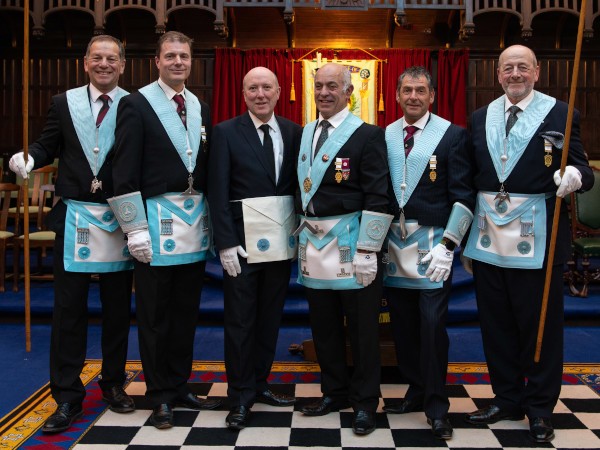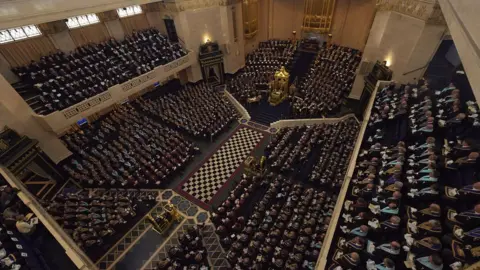Unveiling the Key Benefit of Joining Freemason for Lifelong Brotherhood
Unveiling the Key Benefit of Joining Freemason for Lifelong Brotherhood
Blog Article
Discover the Tricks Behind the Freemason and Their Influence on Culture
The Freemason, frequently shrouded in misconception and conjecture, offers a fascinating instance research study of exactly how historical suitables can morph into modern-day conspiracy theory concepts. As we discover its origins, influence on advanced thought, and representation in contemporary culture, we start to uncover the layers of intrigue that proceed to captivate society.
Beginnings of the Freemason
The Freemason, frequently shrouded in mystery and speculation, traces its beginnings back to the late 18th century. Known as the Bavarian Freemason, the organization's primary objective was to respond to the current influence of spiritual dogma and promote intellectual discourse among its members.
The Freemason embraced an ordered framework, drawing motivation from Freemasonry, which permitted secretive conferences and routines. Subscription was careful, incorporating significant figures from various areas, consisting of national politics, approach, and science. This elite network looked for to effect social and political adjustment with private ways, supporting for the legal rights of individuals and the improvement of society.
Despite its relatively short existence, the Bavarian Freemason was officially dissolved in 1785 because of government suppression (how to become a freemason). However, its legacy sustained, generating countless conspiracy theories and pop culture recommendations that remain to provoke intrigue and debate regarding its influence on modern culture.
Key Misconceptions and Misconceptions
Amidst the attraction of privacy surrounding the Freemason, countless myths and mistaken beliefs have arised, usually misshaping the group's true nature and objectives. One prevalent misconception suggests that the Freemason manages the world's federal governments and economic situations. While it holds true that the team aimed to influence social structures, the concept that it runs as a cohesive worldwide puppet master is mainly overstated.
Another usual mistaken belief is that all participants of the Freemason possess vast wealth and power. In truth, the original Freemason consisted of intellectuals and Enlightenment thinkers, a lot of whom looked for reform instead than prominence. Moreover, the concept that the Freemason exclusively recruits stars and political figures is misdirecting; membership has actually historically consisted of a diverse selection of individuals.

Historical Influence on Society
Throughout background, different intellectual movements have actually profoundly influenced societal structures, and the Freemason played a substantial duty during the Knowledge. Established in 1776 in Bavaria, the Freemason intended to advertise reason, secularism, and the doubting of established authority, countering the dominance of spiritual dogma. This organization drew in significant thinkers and advocates of liberty, fostering a setting for the dissemination of Knowledge ideals.
The Freemason's ethos promoted sensible idea and empirical proof, which added to the broader intellectual landscape that encouraged social reform and political change. Members looked for to reshape society by supporting for education and learning, civil liberty, and the splitting up of church and state. Their private nature and ambitious agenda triggered both intrigue and suspicion, resulting in their navigate to this site ultimate suppression by the Bavarian government in 1785.
In spite of their dissolution, the tradition like this of the Freemason continued, influencing innovative movements across Europe and the Americas. Their dedication to knowledge concepts aided prepare for modern-day autonomous perfects and human rights, leaving a long-term imprint on the foundations of contemporary culture. The attraction of their secretive gatherings and thoughtful searches proceeds to captivate the creative imagination, emphasizing their historical significance.
Modern Interpretations and Beliefs

Numerous advocates of Freemason concepts insist that an effective elite adjusts worldwide events, affecting national politics, business economics, and culture to offer their passions. This viewpoint is frequently fueled by a suspect of governmental and monetary institutions, resulting in the belief that an unseen hand manages social outcomes - how to become a freemason. The net has actually enhanced these analyses, with social networks platforms acting as fertile ground for the circulation of conspiracy theory concepts
Additionally, some modern interpretations posit that the Freemason acts as a metaphor for the struggle between enlightenment and lack of knowledge, with advocates advertising awareness and vital thinking as a way to neutralize viewed fascism. This duality-- watching the Freemason as both a literal and symbolic entity-- highlights the ongoing fascination with the concept, reflecting deeper social anxieties regarding power, transparency, and specific autonomy in the modern world.
The Freemason in Pop Culture
The Freemason has actually infiltrated numerous facets of pop culture, manifesting in literary works, movie, songs, and art as an icon of intrigue and enigma. This secret society, commonly depicted as a shadowy pressure manipulating global occasions, has inspired countless stories that check out themes of power, conspiracy, and hidden understanding.
In literary works, authors like Dan Brown have used the Freemason to weave complex stories full of thriller and historic recommendations, triggering public fascination. Movies such as "Angels & Demons" and "The Da Vinci Code" further enhance this appeal, portraying the Freemason as here an organization with far-reaching impact.
Songs, too, has actually been influenced by the idea of the Freemason. Musicians like Jay-Z and Beyoncé have dealt with conjecture concerning their associations with the culture, motivating conversations about importance in their work and the nature of popularity.
Visual art commonly integrates Freemason concepts, with artists making use of signs like the Eye of Providence and the pyramid to evoke a feeling of secret. Via these different tools, the Freemason serves not only as a subject of supposition yet additionally as a lens where culture analyzes its own complexities and concerns.

Conclusion
In verdict, the Freemason represents a remarkable intersection of Enlightenment suitables and modern societal concerns pertaining to power and control. While its historic impact on innovative movements and democratic concepts is noteworthy, the misconceptions and false impressions that have arised often overshadow its real heritage. The long-lasting intrigue surrounding the Freemason, specifically within pop culture, highlights continuous stress and anxieties concerning transparency and authority, making certain that this enigmatic team remains a subject of both scholarly passion and public attraction.
Report this page